Why culture still trumps Wi-Fi
A decade into the flexible-work revolution, only 21 % of employees say they feel tied to their company’s culture. Remote When distance dilutes belonging, productivity, trust, and retention follow suit.
This guide shares seven research-backed practices that remote-first leaders use to keep talent inspired across continents.
What you’ll learn
- How to anchor culture in values, not venues
- Practical rituals that shrink time-zone gaps
- Tools and check-lists to make autonomy safer than oversight
- Internal links to explore live roles like remote software developer jobs and remote marketing roles
Imagine doing great work from anywhere and still growing your career. Browse Remotly’s fresh remote roles and let your next adventure begin.
1. Define Culture by Values, Not ZIP Codes
A remote-first culture begins with documented values that travel better than office décor. Mapping expected behaviours, how feedback is given, how wins are celebrated gives every hire a clear North Star from day one. Talent Sam
Quick start
- Write a one-page “Ways We Work” handbook.
- Pin it to your onboarding checklist and Slack header.
- Revisit values each quarter with team polls.
2. Over-Communicate, Asynchronously
Communication is an operational backbone, not a soft skill. Distributed leaders cut meeting loads by 21 % when they default to async updates and reserve live calls for decisions or bonding. The Culture Contract
Try this
- Record Loom video summaries instead of late-night cross-time-zone calls.
- Tag decisions in project tools so history is searchable.
- Create “deep-work” slots, calendar blocks free of chats.
3. Hire and Onboard for Anywhere
Companies offering remote options tap a 77 % larger talent pool among tech workers alone. fronted.com. Yet global hires feel disconnected if onboarding lags.
Checklist
- Video-first interviews for culture add, not just skills.
- A 30-day buddy program spanning regions.
- Centralised onboarding hub with role-specific “read-me” docs.
4. Anchor on Outcomes, Not Hours
Stanford research shows teams focused on clear OKRs see quits drop 35 %. The Culture Contract Seat-time metrics fade; transparent dashboards shine.
Metrics that matter
- Weekly progress updates visible to all.
- OKR dashboards integrated with project boards.
- Recognition shout-outs tied to outcomes, not overtime.
5. Nurture Belonging Through Micro-Rituals
Isolation is the top remote pain point, cited by 23 % of workers. Atlassian. Micro-rituals, birthday GIFs, virtual coffee roulettes, and cross-cultural recipe swaps keep humanity alive in chat threads.
Ritual menu
- Monthly “Show-and-Tell” call, five-minute demos of side projects.
- Slack #kudos channel with weekly digest bot.
- Quarterly virtual off-site with games and strategy sessions.
6. Engineer Flexibility With Guardrails
Buffer’s 2023 report found 60 % of remote staff value the freedom to live where they choose. Atlassian. Freedom works when paired with stable core collaboration windows (e.g., 14:00-17:00 UTC) and documented processes.
Guardrails
- Publish expected reply-time SLAs.
- Protect at least four hours of overlap for critical teams.
- Encourage full disconnection after working hours, modelled by leaders.
7. Measure, Learn, Iterate
Remote culture is a product, ship, measure and iterate. Sentiment pulses and engagement dashboards flag issues faster than annual surveys.
When any metric dips more than five points, trigger a playbook: diagnose root cause, co-design fixes, and share learnings company-wide.
Conclusion – your map to borderless belonging
Remote-first culture is intentional, inclusive, and iterative. By focusing on values, async clarity, outcome-based recognition, and data-driven rituals, you create a team that wins together even when miles apart.
Next step: Explore fresh openings on Remotly’s creative & content board and build your own global story.
TL;DR
1. What is a remote-first culture?
It treats location flexibility as the default and optimises every process, hiring, meetings and recognition for distributed collaboration.
2. Does remote work hurt productivity?
Hybrid setups match in-office output, and full-remote only lags when communication is weak.
3. How often should distributed teams meet live?
Weekly 15-minute stand-ups plus monthly retros keep alignment without burnout.
4. How do we keep engagement high remotely?
Use real-time sentiment pulses, continuous recognition, and clear growth paths.
5. What metrics matter most?
Track eNPS, recognition frequency, 1-on-1 gap days, and turnover risk.
6. Are remote careers disadvantaged?
Studies show no promotion penalty when goals are transparent and feedback is regular.
7. Where can I find remote jobs that fit my skills?
Browse Remotly’s curated boards like remote data analyst roles to match your expertise.



